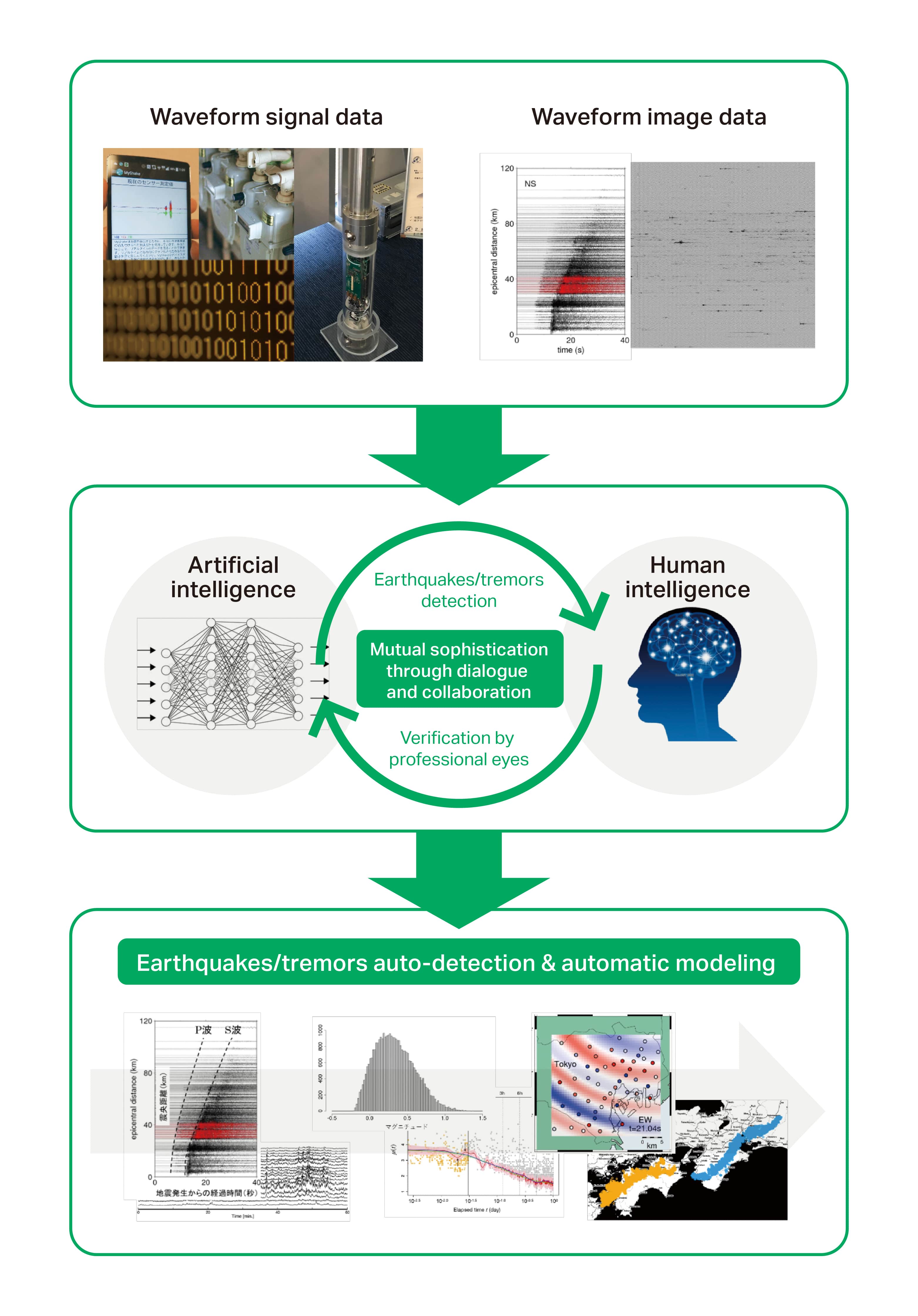PROJECT
Seismology deepened by human intelligence and
accelerated by artificial intelligence.
SYNTHA-Seis Project Outline
The ongoing third artificial intelligence boom, which started at the beginning of this
century, has had a profound effect on daily life in human society. Modern artificial
intelligence technologies, such as deep learning, are powerful tools for extracting
insights from data and have found applications in various scientific fields. For
example, in the field of seismology, the ability of deep learning architectures to
detect P-waves and S-waves in seismic waveform data can surpass the performance
of even the most experienced seismologists. However, although these architectures
exhibit strong P and S-wave performance, there exists a wide variety of other
vibration phenomena originating from the Earth’s interior which current artificial
intelligence technology has yet to completely detect or classify. For example, one of
the hottest recent topics in seismology is the investigation of small-scale deep low-frequency earthquakes (hereafter “microtremors”) whose magnitudes are close to
the limit of detection. Given these remaining challenges, the further development of
artificial intelligence technologies to detect seismic events such as microtremors in
observational data is an urgent task in modern seismology.
In addition to developing such detection technologies, it is also essential from the
perspective of disaster prevention and mitigation to elucidate and understand the
underlying mechanisms of earthquakes, based on the physical and statistical
modeling of spatio-temporal seismic activities and the deep underground structure.
Artificial intelligence has yet to surpass human intelligence in this area, and such
modeling is still largely based on the expertise of seismology domain experts. This
is because the reasoning of cutting edge artificial intelligence technologies, such as
deep learning, is opaque and not easily interpretable by humans, which leads to
difficulties in verifying and improving results obtained from deep learning models.
Many more years of research will be required for artificial intelligence to replace
modeling techniques accumulated by human intelligence. Considering this reality,
the simultaneous advancement of conventional models based on human
intelligence, and deep learning models based on artificial intelligence, is a crucial
task. The ongoing collaboration between both will lead us to a new horizon of
earthquake research.
This project, in which the Earthquake Research Institute of The University of Tokyo
plays a central role, strives to enhance detection methods for earthquakes and
microtremors based on artificial intelligence, and to deepen the coevolution of
physical and statistical models derived from human and artificial intelligence to
open a new era of earthquake research and disaster prevention. In addition, this
project contributes to spreading the collaboration of information science and
seismology through lectures and seminars, and makes efforts to discover and foster
young researchers who will lead the next generation of scientists.


